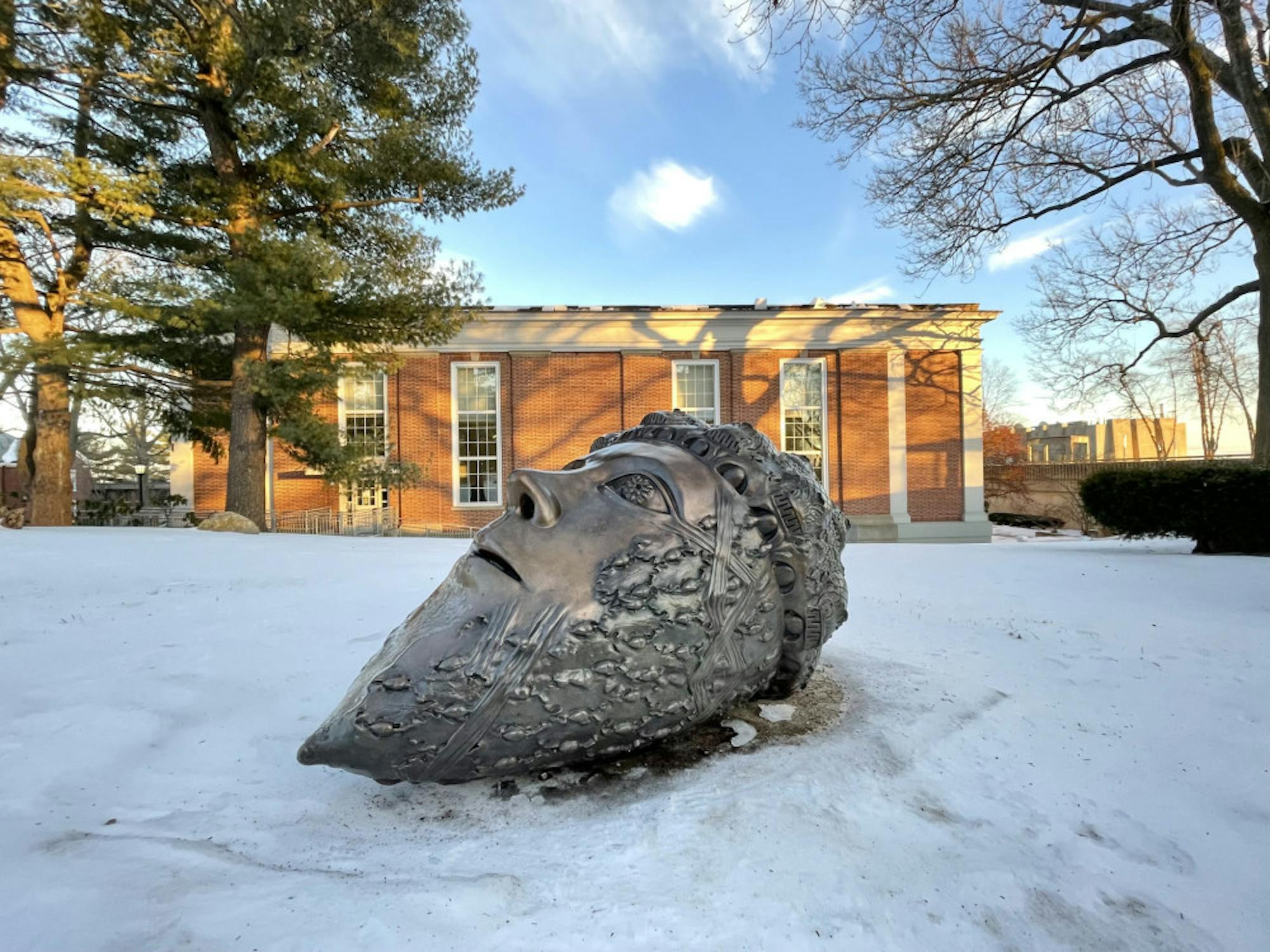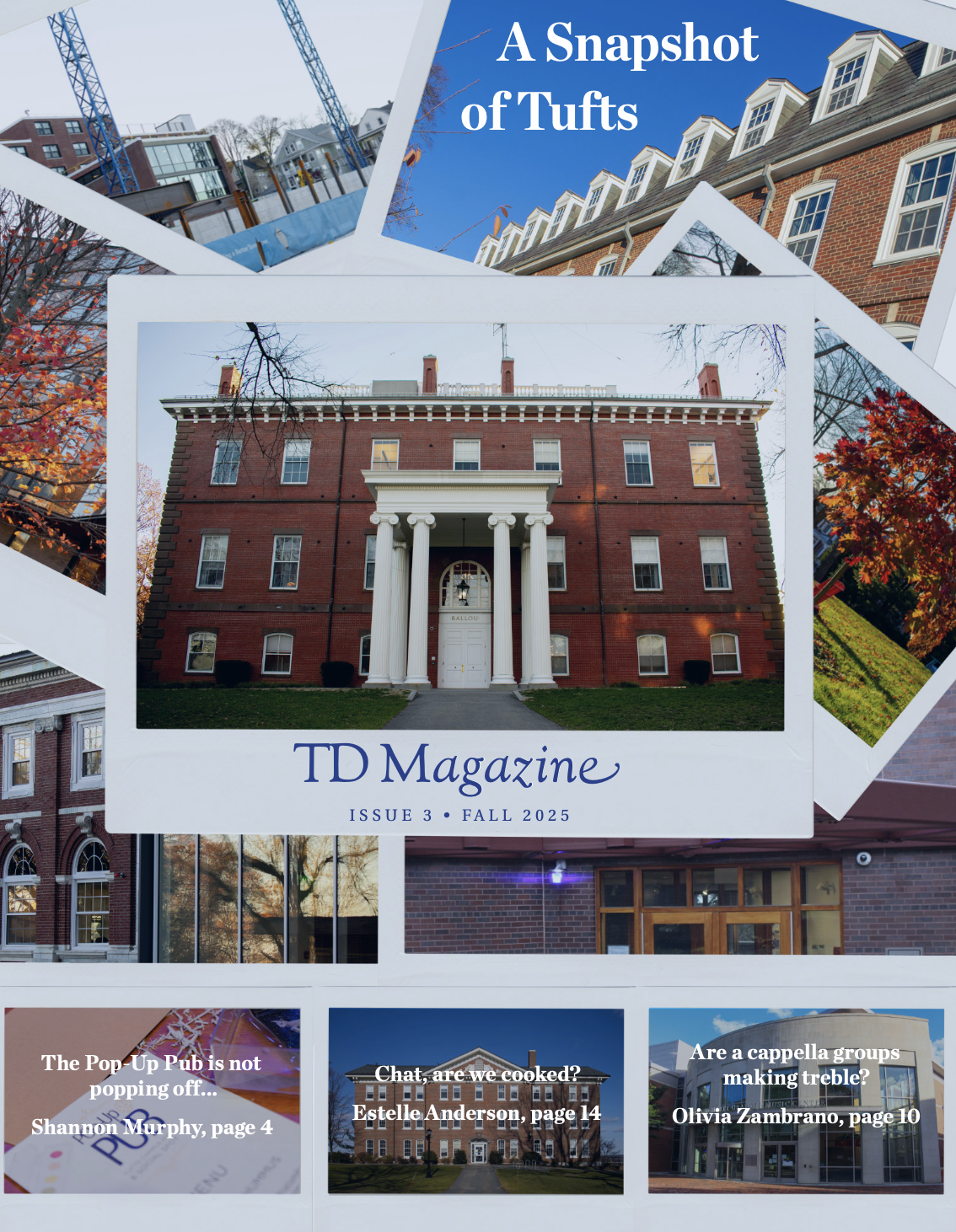Walking through campus, students, faculty, staff and visitors can find art in unexpected public places. This art is not randomly placed but rather is connected to the space it occupies.
Abby Satinsky, curator and head of public engagement for the Tufts University Art Galleries, said that public art provides a less formal way of experiencing art.
“When I think about public art, I think about the ways that people encounter art in public spaces where they're not necessarily going to a gallery or a museum to have that experience, but it's sort of just part of their landscape of experience,”Satinsky said.
The public art on campus is maintained by the Public Art Committee, which is made up of representatives from various university departments.
“It's important to have a committee that has representatives from people from all over campus to sort of think through all the different ideas and issues,”Dina Deitsch, director and chief curator of the Tufts University Art Galleries, said.
The committee pays close attention to the equity of new projects, as well as examines the art already on display to the public, Dan Santamaria, university archivist and director of the Digital Collections and Archives, said.
“I see that committee as really trying to think critically about the art that is on display across all Tufts campuses, and really trying to think intentionally and systematically about what people encounter and what they see as they're going about their days and living in spaces,”Santamaria said.
As part of the anti-racist workstream, the Public Art Committee has been looking at representation in the art on campus. The committee released areport that examined the equity of representation in public art on the Medford/Somerville campus. Of the 50 portraits on campus, all depicted white men except for one white woman, Deitsch said.
Following recommendations from the Public Art Committee, the portraits of former university presidents were removed from the Coolidge Room and will be replaced with an exhibition on the history of the Black student experience at Tufts, which comes out of theGerald Gill papers.
The public art on campus is made up of both temporary and permanent installations. Deitsch said there are a couple of sites that she thinks of as rotational sites for public art, including the billboard at the SMFA campus and the exterior wall of Jackson Gym.
“Temporary public art tends to be more responsive, and address[es] particular situations or particular sites, but isn't meant to be there forever,”Satinsky said.
Both sites currently have wheat pastemurals related to ongoing art exhibitions at the galleries on each campus. The wheat-pasted billboard at the SMFA, Josh MacPhee’s “We Carry a New World in Us,” depicts bricks suspended amid clouds.
The billboard grew out of a project calledArtist Response about how artists respond to and are part of social movements,Satinsky said. Wheat paste has long been used by artists in public spaces, as it is inexpensive and holds up well to the weather.
“It's about the idea of coming back to this institution after COVID,”Satinsky said. “So it speaks of this ambivalent period that we're in … What does it mean to rebuild?”
The wall of Jackson Gym currently displays “Wakpa,” a mural by multidisciplinary artist Erin Genia. Genia is a member of the Sisseton-Wahpeton Oyate, a Dakota tribe, and works to centerDakotaphilosophies in her multidisciplinary work. The piece, which also has an audio component, depicts the Mystic River and the Dakota Morningstar symbol.
In creating the piece, Geniaengaged with the Mystic River and how it has impacted Tufts. Genia learned that Peter Tufts made some of his fortune through the brick industry and the clay for the bricks was sourced from the Mystic River clay beds.
Genia created her first public art piece in Seattle, translating her studio work to a public practice. The piece, which became known as a Dakota pride banner, was about her experience as an urban Native American person. As she created the piece, Genia grappled with the question of perceiving art in public space as a utopian ideal.
“From my perspective as a Dakota person, I don't view the public space in that way because this is a settler colonial society … I was perceiving these public spaces [as] places of occupation,”Genia said. “My views really began to shift as I started to do this work and think about how all public space really is native land … What does that mean for me as a native artist to engage with those sites?”
According to Deitsch, good public art, such as the “Wakpa” mural, engages with the space it is in and its history, adding onto the narrative of the space.
“I think in a perfect world public art can complicate what you think you know and see, and, makes it strange again, that's what good art does,”Deitsch said. “Hitting unexpected territory and thinking about changing the nature of our public spaces, and how we conceive of them and their histories, I think that has an incredible potential on this campus.”
One of the big upcoming public art projects is art for the new Joyce Cummings Center, which should be installed by this summer. There are three commissions for the building, including two SMFA alumni artists, Deitsch said. The artists have been working to understand the space and create works that fit well in the context of the building.
Public art doesn’t just revolve around Tufts’ campuses but can engage with the broader community. The Tufts University Art Galleries have been working on ways to reach beyond the physical campus through art.
As part of theCollective Futures Fund, the Tufts University Art Galleries gives out grants, through funding from the Andy Warhol Foundation for the Visual Arts and an anonymous donor, to artists in the Greater Boston area for community-based public art projects, Satinksy said.
“What that money goes toward is community-based public art projects that are organized by artists, that are risk-taking or experimental [and] have impact in their communities,”Satinsky said, “That's also a big part of our public engagement with the city.”
Public art has the ability to engage with communities and spaces in a way that gallery-based art cannot, Satinsky said.
“If it's done through processes that involve input, [public art] can provide different kinds of ways that we all think that we're invested in our civic spaces, and it can reflect different kinds of social and community histories,”Satinsky said.






